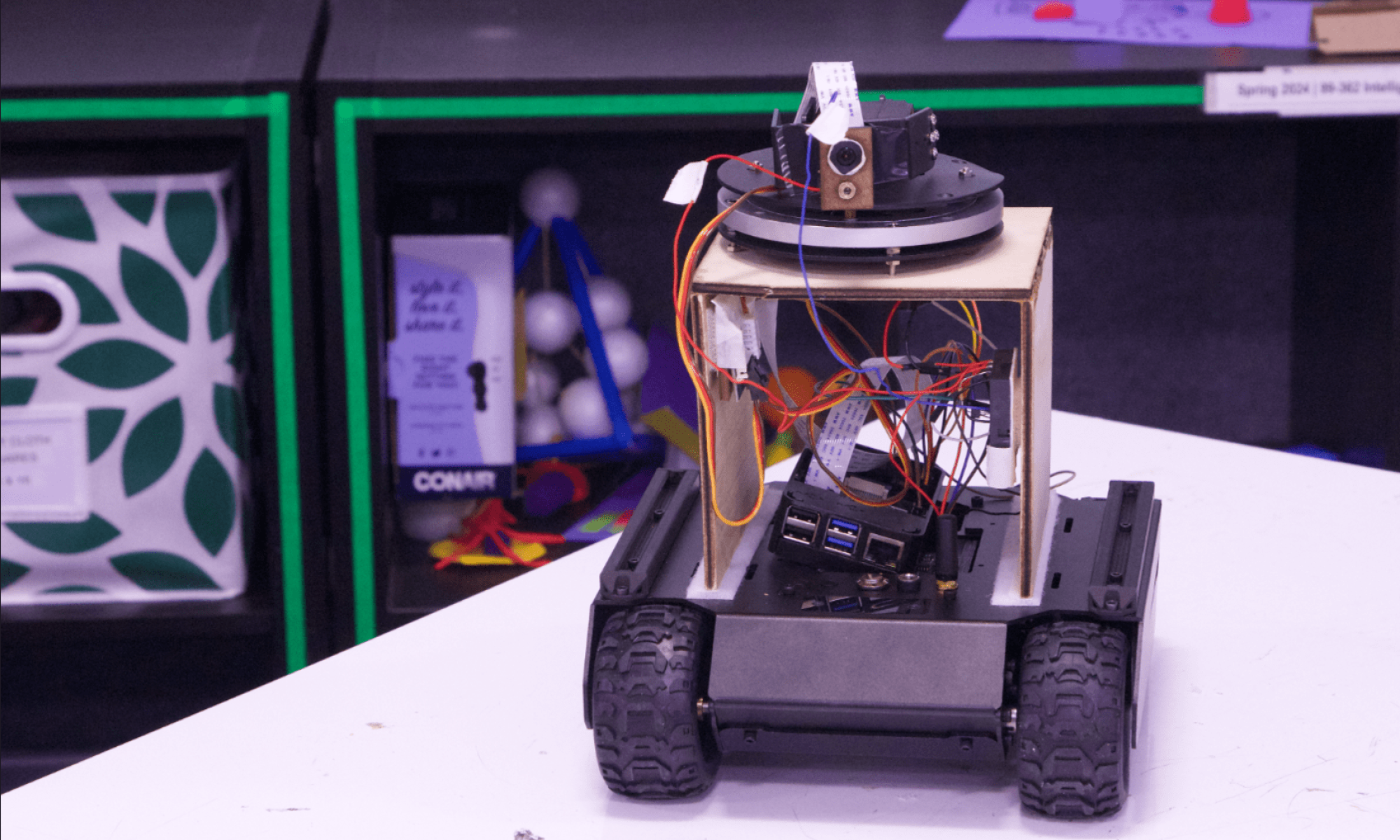Accomplished Tasks
For this week, my team and I worked on integrating all of our subsystems. We began by moving all the code to the rover’s RPi and meshing together the laser circuit and I/O from the PTZ so that it would be unified on a breadboard with shared ground and power. In addition, to mount the camera on the rover, I glued and stabilized pieces of wood with laser cut holes to hold the camera in place. This was to ensure the camera would be at a tall enough height for the rover to “search” and find people with visible parts.
For new tools and technologies learned, I had to learn about the RaspberryPi framework from scratch as I had never previously worked on it before. Due to the older hardware we were working with, I had a lot of struggles dealing with errors from deprecated libraries that were no longer maintained on certain RPi operating systems. This meant flashing multiple SD cards with different OS’s trying to resolve firmware dependencies and installation requirements. To mitigate these obstacles, I primarily found watching youtube videos of people working with RPi’s to be helpful since they had step by step explanations of how the hardware was connected to the RPi and what different ribbon cables were for. Regarding solving problems with RPi dependent libraries and getting the camera to work in general, I surveyed across a variety of RPi forums and stack exchange threads as many people would either be dealing with the same issue or something somewhat relevant to mine. Many times, I would need to think of a novel way to communicate the video feed between the camera and my web application as many online methods were using modern picamera libraries that weren’t compatible with our older Arducam. Although there was a steep learning curve, it was good to know that people online were also dealing with similar issues with setting up the camera and finding workarounds with the configurations was shared throughout forums everywhere.
Progress
My progress is slightly behind on my web application since I was originally researching on how to configure an interface on the web application that would send keypresses from the PC to the RPi which would register movements for the PTZ gimbal since the PTZ movement library is only compatible on the RPi operating system. Thus, triggering keypresses would need to be sent remotely to the RPi through means of SSH or possibly even sockets. However, we recently decided against manual authorization of the PTZ by rescue workers since we already planned on creating a script that would have it move autonomously and adding manual movement could cause us to veer off course as we don’t have sensors to prevent the rover from running into obstacles. I hope to also include tracking people’s locations, however, communication with the CV server has proven to be difficult since I am broadcasting the camera stream to the server with no obvious input being able to be sent back.
Next Week’s Deliverables
Next week, I plan to finish my web application and have it be deployed onto the AWS server while ensuring low latency communication with the camera feed. In addition, I will help with ensuring the rover is fully integrated as well as run tests to make sure we have hit all our design goals.
